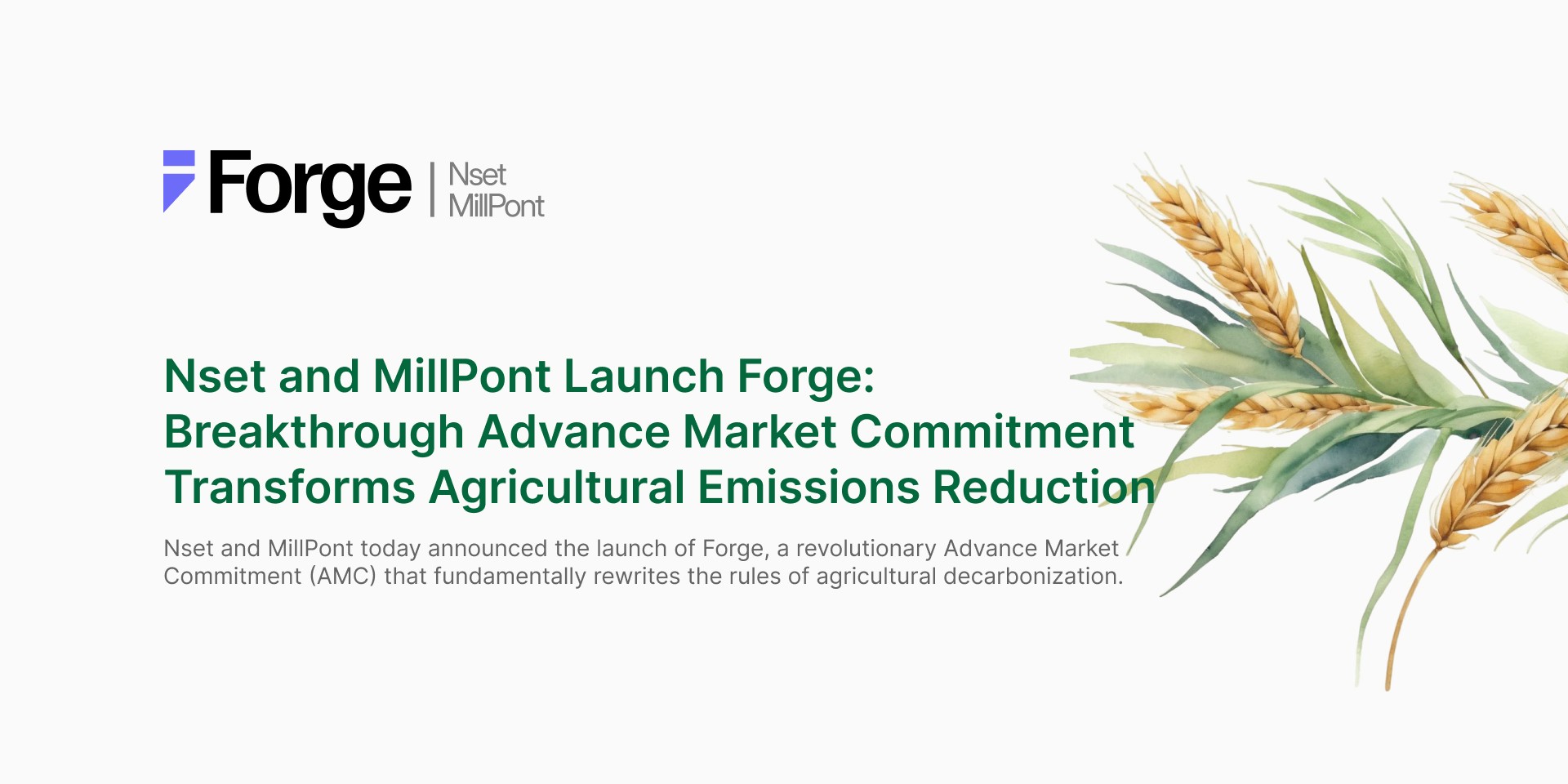🍫 Climate-Smart Cocoa: A Primer
Tuesday, June 4, 2024
The cocoa industry has been making headlines. Climate change is already impacting global supply chains, disrupting production and driving up costs. On top of this, producers are coming under increasing pressure to meet EU sustainability mandates.
In this primer, we explore the innovative strategies and practices that are transforming cocoa production into a climate-smart industry, ensuring a sweeter future for both farmers and our planet.
We cover:
🍫 Cocoa market overview
📉 Recent volatility
👨🌾 What is climate-smart cocoa & why it's needed
💡 Solutions
⬆️ Scaling implementation
🍫 Cocoa market overview
In 2023, global cocoa bean market was valued at $16 billion and is expected to grow to over $22 billion by 2028- an annual growth rate of nearly 7%.
Cocoa is primarily grown in tropical regions around the equator. West Africa dominates global production, accounting for around 75% of the world's supply, with Côte d'Ivoire and Ghana alone responsible for over 59% of global production.

Source: Visual Capitalist
The cocoa supply chain is complex, involving several stages:
Growing and harvesting: Cocoa is grown on small, family-run farms by 40-50 million farmers. The trees require specific climatic conditions, including high rainfall and temperatures, and are often grown under the shade of rainforest trees.
Fermentation and drying: After harvesting, cocoa beans are fermented and dried, processes that significantly impact the quality and flavor of the cocoa.
Selling and transporting: The dried beans are sold to buying stations, transported to exporters, and then shipped to processing facilities worldwide.
Processing: Cocoa beans are processed into various products, including cocoa powder, cocoa butter, and chocolate. Processing often occurs in countries different from where the beans are grown, although there is a trend towards more local processing in producing countries to enable them to add value.
Manufacturing and retail: Processed cocoa products are used by manufacturers to produce chocolate and other cocoa-based products, which are then distributed to retailers and sold to consumers.
📉 Recent volatility
Over the past 12 months, the price of cocoa has reached unprecedented levels. In March 2024, cocoa prices surged to over $10,000 per metric ton, more than tripling from the previous year. Despite a slight retreat in prices to around $7,000 per metric ton by May 2024, they remain significantly higher than historical averages, reflecting ongoing supply constraints and market volatility.
While global production reached 6.5 million tonnes in 2022, recent forecasts now indicate a decline in production, with the 2023/24 season expected to see a decrease of almost 11%.
Drivers of this volatility include:
🌦️ Climate Change: Unpredictable weather patterns, severe El Niño conditions and crop diseases exacerbated by rising global temperatures have reduced yields in major producing regions.
🔗 Supply Chain Disruptions: Issues such as port congestion, shipping delays, and rising transportation costs have further strained the supply chain.
🧺 Rising Production Costs: Efforts to implement sustainable and ethical farming practices have increased production costs.
📈 Investor Speculation: Speculative activities in the commodity markets have also driven up cocoa prices.
For cocoa farmers, higher market prices might seem beneficial, but the increased earnings could be undermined by rising production costs and the demand to adhere to sustainability standards.

Image by Pixabay
👨🌾 Why climate-smart cocoa?
So, what is climate-smart cocoa? 🤔
Climate-smart cocoa leverages sustainable agricultural practices to enhance productivity, improve adaptation to climate change, and mitigate the greenhouse gas emissions of existing cocoa farming systems. This approach focuses on optimizing yields and quality relative to inputs, building long-term resilience to climate impacts, and reducing the environmental footprint of cocoa farming.
Shifting to this approach is of growing importance to people across the value chain.
💪 Resilience to increasing climate impacts
As climate change impacts become more severe, studies have shown that cocoa yields could be reduced by up to 40% by the end of the century.
Different regions will face varying levels of flooding, drought and increasing temperatures, to which farming approaches will need to adapt. Additionally, traditional farming methods can often lead to deforestation and biodiversity loss, further exacerbating climate change and reducing the long-term viability of cocoa farming.
Sustainable practices, such as agroforestry, can help mitigate impacts by creating more resilient farming systems able to better withstand climatic stressors. These practices also help maintain soil health and water retention, which are crucial for sustaining cocoa production under changing climate conditions. In turn, the livelihoods of farmers are better protected by more stable and productive farming systems.
💸 Build greater price stability
Sustainable farming practices can contribute to greater price stability by improving yield consistency and reducing the risk of crop failures due to environmental risks. Additionally, sustainable practices often involve diversifying income sources, such as intercropping with other crops or producing value-added products, which can provide farmers with more financial stability and reduce their dependence on volatile cocoa prices.
📗 Adhere to sustainability regulations
60% of global chocolate imports go to the EU, meaning recent sustainability focused regulatory announcements deeply impact global cocoa producers.
A key regulation, the European Union Deforestation Regulation (EUDR), mandates that cocoa products entering the EU market must be deforestation-free, meaning they cannot be sourced from land deforested after December 31, 2020. This regulation aims to curb the environmental impact of agricultural expansion and promote sustainable production practices.
Compliance with the EUDR requires cocoa producers to implement traceability systems and provide evidence that their products are not linked to deforestation. This regulatory shift is expected to drive the adoption of sustainable practices across the cocoa supply chain, as non-compliant products will be barred from the lucrative EU market.
Additional regulations that have been announced are the CSRD and CSDDD, which will require even more stringent sustainability reporting over the coming years.

Image by Vignesh Vinod
💡 Solutions for climate smart cocoa
Transitioning to low carbon, sustainable cocoa production is essential for building resilience to climate change, protecting livelihoods and ecosystems, creating price stability, and complying with upcoming sustainability regulations. How is this being achieved?
🌾 Adopting climate-smart agriculture
Cocoa farmers are shifting towards adopting multiple climate-smart practices to combat climate change. Agroforestry approaches include:
Integration of shade trees helps to maintain soil health, enhance biodiversity, and provide a microclimate that protects cocoa plants from extreme weather conditions, as well as removing carbon from the atmosphere.
Moving towards more diverse systems that include a variety of tree species and crops, both supporting cocoa production and providing additional sources of income through the sale of fruits, timber, and other non-timber products.
Implementing agroforestry on a landscape scale, involving multi-stakeholder collaboration to address land and tree tenure issues and finance the costs of agroforestry.
Broader climate-smart practices are also being adopted, such as improved soil management, water conservation techniques, and the use of drought-resistant cocoa varieties. Organic approaches including the use of natural fertilizers and pest management are also being increasingly embraced.
Investment is hugely important in enabling farmers to understand and invest in producing resilient, low carbon cocoa crops. Programs are emerging that train farmers on sustainable farming techniques, providing the necessary tools and resources to implement these practices effectively. This includes developing plant nurseries for tree seedlings and securing land rights for farmers to incentivize investment in sustainable practices.
🛰️ Capturing and demonstrating climate impact
The EUDR is driving opportunities for technological innovation in the cocoa sector, as digital solutions will be essential for developing traceable, farm-level data. Getting this data collection right is crucial in ensuring deforestation is understood and tackled effectively.
For example, the collection of geolocation coordinates and polygon mapping for all cocoa plots is needed to conform to the EUDR. This data is used to verify that cocoa is not sourced from deforested land. Systems like the Ghana Cocoa Traceability System (GCTS) and COCOBOD’s national traceability system are being developed to provide comprehensive digital MRV capabilities. This will enable companies to implement successful due diligence processes.
Satellite technology also plays a crucial role in monitoring deforestation. Freely available satellite imagery from programs like Sentinel-1 and Sentinel-2 is used to map cocoa-growing areas and monitor deforestation in near real-time. These images help detect changes in land use and ensure that cocoa production does not contribute to deforestation. Advanced machine learning techniques can be applied to satellite data to improve the accuracy of deforestation monitoring to better capture the structure of forests and cocoa plantations, providing more reliable data for compliance assessments.
On the ground, Flux towers are also being used to measure the exchange of carbon dioxide, water, and energy between the forest and the atmosphere. This data helps quantify the carbon sequestration capacity of cocoa farms and assess their role in mitigating climate change. Projects like the Carbon Flux Tower Monitoring Project in Ghana integrate flux tower data with national greenhouse gas inventories, enhancing the ability to monitor and report on the environmental impact of cocoa production.
📑 Accurate, transparent record keeping
Blockchain technology is being leveraged to store complex, incoming data, providing a transparent, incorruptible and up-to-date record for all interested parties to access. Tools like Seedtrace for example, are able to capture and synchronize data even without internet connectivity, ensuring that all cocoa production data is transparent and verifiable.

Image by GoogleDeepMind
⬆️ Scaling implementation
While these solutions are currently being developed, it is essential that they are rolled out quickly to protect future cocoa supplier- for farmers and consumers. Several options are being explored to accelerate progress.
Nset's Climate-Smart Commodities solve for all the below, offering ready-to-go commodities that plug directly into existing supply chains. This delivers key benefits of enhanced resilience, long-term price stability and tackling ESG targets.
💶 Innovative finance models
Forward financing is a critical tool for enabling sustainable cocoa production. It involves providing farmers with the necessary financial resources upfront to invest in sustainable practices. This helps overcome the initial cost barriers associated with transitioning to low-carbon methods.
Aggregators such as cooperatives, trading, or processing companies play a vital role in reaching out to smallholder farmers, linking them to markets, and providing services such as credit for farm inputs and agronomic training. These entities can offer forward financing to farmers, enabling them to invest in sustainable practices without bearing the immediate financial burden.
Additionally, programmes like the Cocoa Productivity and Quality Program (CPQP) have developed innovative finance products targeted at 'fertilizer-ready' and finance-ready farmers. These models help farmers access the necessary inputs and services to improve their productivity and sustainability.
🌳 Leveraging carbon markets
Selling carbon credits associated with agroforestry offer a promising opportunity for cocoa farmers to generate additional income while promoting sustainable practices. By integrating agroforestry systems, farmers can sequester carbon and sell the resulting credits on the carbon market.
For example, growing cocoa under the shade of certain tree species can significantly increase biomass carbon stocks and provide better habitat for biodiversity. This approach is utilized by the Kennemer Eco Solutions' "MinTrees" agroforestry project in the Philippines, which supports smallholder cacao farmers in generating and selling carbon credits through the voluntary carbon market.
🤝 Improved collaboration
Emerging coalitions and partnerships are crucial for helping farmers and companies comply with the stringent requirements of emerging regulations.
The Rainforest Alliance is supporting cocoa farmers in meeting EUDR requirements by providing tools and systems for traceability and risk assessment. Their certification program includes automated risk assessment maps for deforestation and proprietary AI remote sensing data for mapping deforestation risks.
The World Cocoa Foundation (WCF) collaborates with governments and industry stakeholders to develop standardized deforestation-free assessments and traceability systems. Their initiatives aim to support national traceability systems in cocoa-producing countries like Côte d'Ivoire and Ghana to ensure EU compliance



